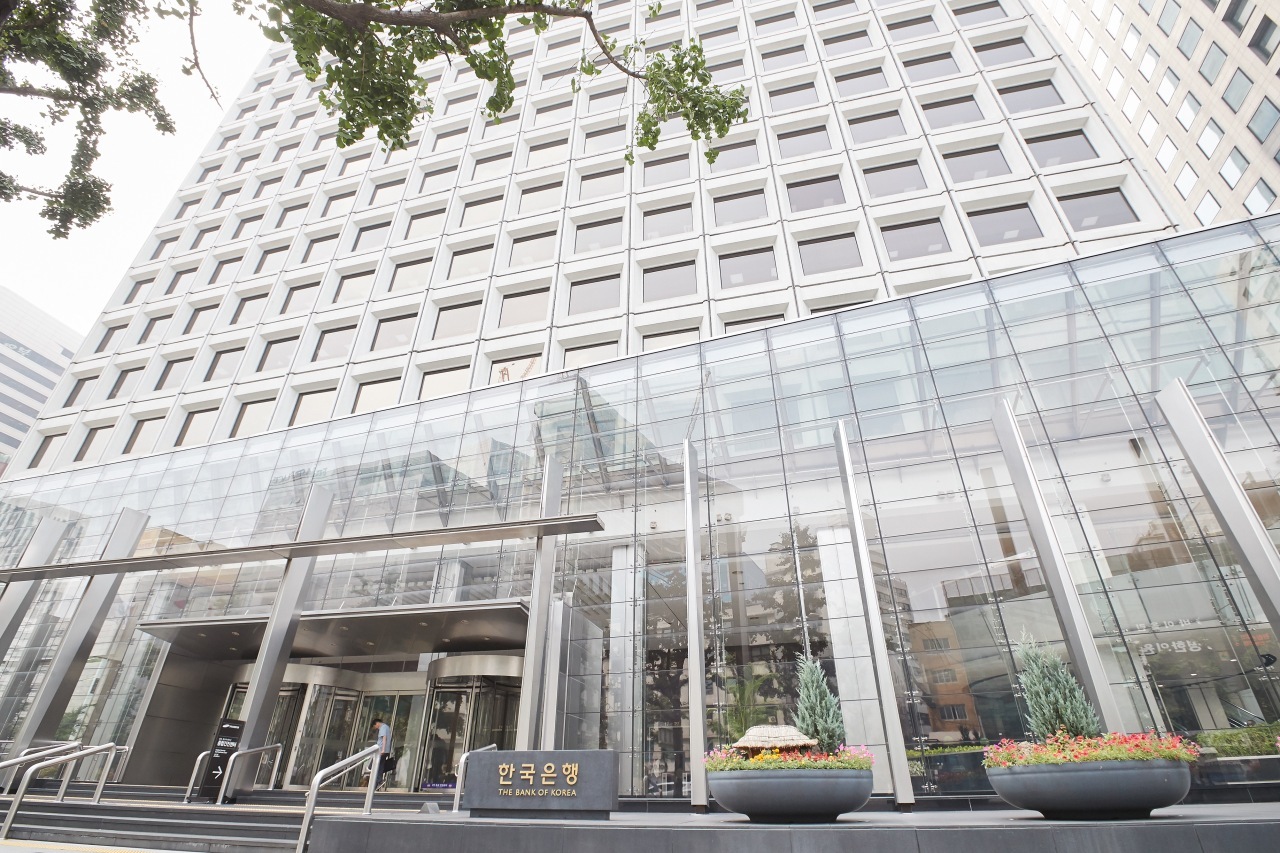BOK signals rate hike slowdown while slashing growth forecast
By Choi Si-youngPublished : Aug. 1, 2022 - 17:36

Bank of Korea Gov. Rhee Chang-yong told lawmakers Monday that the central bank will deliver the usual 0.25 percentage point interest rate hikes this year, while acknowledging that the economy would fall short of the 2.7 percent annual growth for 2022.
The central bank a month ago backed its biggest single rate raise of 0.5 percentage point to tame persistent inflation prompted by a global surge in materials and food costs. The bank holds three more board meetings, each in August, October and November.
“Unless we have to revise our inflation and growth targets going forward, a 25 basis point raise looks right,” Rhee said at a regular briefing meant to update the National Assembly’s strategy and finance committee on the bank’s latest plans. The committee started a new term in July.
Inflation will start easing at least three months after since it reached an annual increase of 6 percent in June, Lee added, describing a big hike of 50 basis points as a possibility if prices run above the bank’s projection. The price gain in June marked a 24-year high.
“If we fail to rein in higher prices, real household income takes a hit. After that, it costs more to cool inflation, so it’s important to act (now),” Lee said, noting the bank would help out the “vulnerable group” -- those hit hardest by higher borrowing costs, like self-employed people and small-business owners.
Meanwhile, Lee, who in May cut this year’s growth forecast to 2.7 percent from 3 percent, acknowledged even the revised estimate was unreachable. But the top banker downplayed concerns over stagflation, a coupling of low growth and high prices.
“Economic uncertainties are set to prevail for the time being and globally the conditions are getting worse. But here we’re doing fairly well,” Lee said, referring to surprise growth in the second quarter.
Gross domestic product for the April-June period rose 0.7 percent on-quarter, higher than the 0.3 percent growth the bank expected as consumption increased thanks to the government’s decision to scrap nearly all COVID-19 restrictions.
“It’s too early to tell whether the economy is entering a stagflation period. We’ll have to look at more data in October,” Lee said.
Despite Lee’s assurances, growth concerns are simmering as policymakers would have few tools to prop up the export-led economy once a global recession takes place because of a dramatic pivot to tighter policy.
According to Trade Ministry data, trade deficit for Asia’s fourth-largest economy in the first half of this year reached $10.3 billion -- the largest level ever seen in the six-month period. The trade deficit in the first seven months including July reached a 66-year high.
Moody’s Analytics, the sister company of the ratings agency that advises on risk management, said higher oil prices offset a surge in exports, noting the country, whose key exports include memory chips, would have to deal with falling chip prices later the year.
Last week, the International Monetary Fund said a global recession could soon take place as a collision of crises disrupts major economies like the US, China and Europe. The IMF downgraded its global growth forecast this year to 3.2 percent from 3.6 percent, its April projection.
The US economy contracted in the last two quarters, though US Treasury Secretary Janet Yellen downplayed a shrinking GDP, saying it did not necessarily mean a recession was taking place in the world’s largest economy. It still has strength, especially in jobs, according to Yellen.
The central bank a month ago backed its biggest single rate raise of 0.5 percentage point to tame persistent inflation prompted by a global surge in materials and food costs. The bank holds three more board meetings, each in August, October and November.
“Unless we have to revise our inflation and growth targets going forward, a 25 basis point raise looks right,” Rhee said at a regular briefing meant to update the National Assembly’s strategy and finance committee on the bank’s latest plans. The committee started a new term in July.
Inflation will start easing at least three months after since it reached an annual increase of 6 percent in June, Lee added, describing a big hike of 50 basis points as a possibility if prices run above the bank’s projection. The price gain in June marked a 24-year high.
“If we fail to rein in higher prices, real household income takes a hit. After that, it costs more to cool inflation, so it’s important to act (now),” Lee said, noting the bank would help out the “vulnerable group” -- those hit hardest by higher borrowing costs, like self-employed people and small-business owners.
Meanwhile, Lee, who in May cut this year’s growth forecast to 2.7 percent from 3 percent, acknowledged even the revised estimate was unreachable. But the top banker downplayed concerns over stagflation, a coupling of low growth and high prices.
“Economic uncertainties are set to prevail for the time being and globally the conditions are getting worse. But here we’re doing fairly well,” Lee said, referring to surprise growth in the second quarter.
Gross domestic product for the April-June period rose 0.7 percent on-quarter, higher than the 0.3 percent growth the bank expected as consumption increased thanks to the government’s decision to scrap nearly all COVID-19 restrictions.
“It’s too early to tell whether the economy is entering a stagflation period. We’ll have to look at more data in October,” Lee said.
Despite Lee’s assurances, growth concerns are simmering as policymakers would have few tools to prop up the export-led economy once a global recession takes place because of a dramatic pivot to tighter policy.
According to Trade Ministry data, trade deficit for Asia’s fourth-largest economy in the first half of this year reached $10.3 billion -- the largest level ever seen in the six-month period. The trade deficit in the first seven months including July reached a 66-year high.
Moody’s Analytics, the sister company of the ratings agency that advises on risk management, said higher oil prices offset a surge in exports, noting the country, whose key exports include memory chips, would have to deal with falling chip prices later the year.
Last week, the International Monetary Fund said a global recession could soon take place as a collision of crises disrupts major economies like the US, China and Europe. The IMF downgraded its global growth forecast this year to 3.2 percent from 3.6 percent, its April projection.
The US economy contracted in the last two quarters, though US Treasury Secretary Janet Yellen downplayed a shrinking GDP, saying it did not necessarily mean a recession was taking place in the world’s largest economy. It still has strength, especially in jobs, according to Yellen.








![[KH Explains] Hyundai's full hybrid edge to pay off amid slow transition to pure EVs](http://res.heraldm.com/phpwas/restmb_idxmake.php?idx=644&simg=/content/image/2024/04/18/20240418050645_0.jpg&u=20240419100350)







![[From the Scene] Monks, Buddhists hail return of remains of Buddhas](http://res.heraldm.com/phpwas/restmb_idxmake.php?idx=652&simg=/content/image/2024/04/19/20240419050617_0.jpg&u=20240419175937)

![[KH Explains] Hyundai's full hybrid edge to pay off amid slow transition to pure EVs](http://res.heraldm.com/phpwas/restmb_idxmake.php?idx=652&simg=/content/image/2024/04/18/20240418050645_0.jpg&u=20240419100350)

![[Today’s K-pop] Illit drops debut single remix](http://res.heraldm.com/phpwas/restmb_idxmake.php?idx=642&simg=/content/image/2024/04/19/20240419050612_0.jpg&u=)